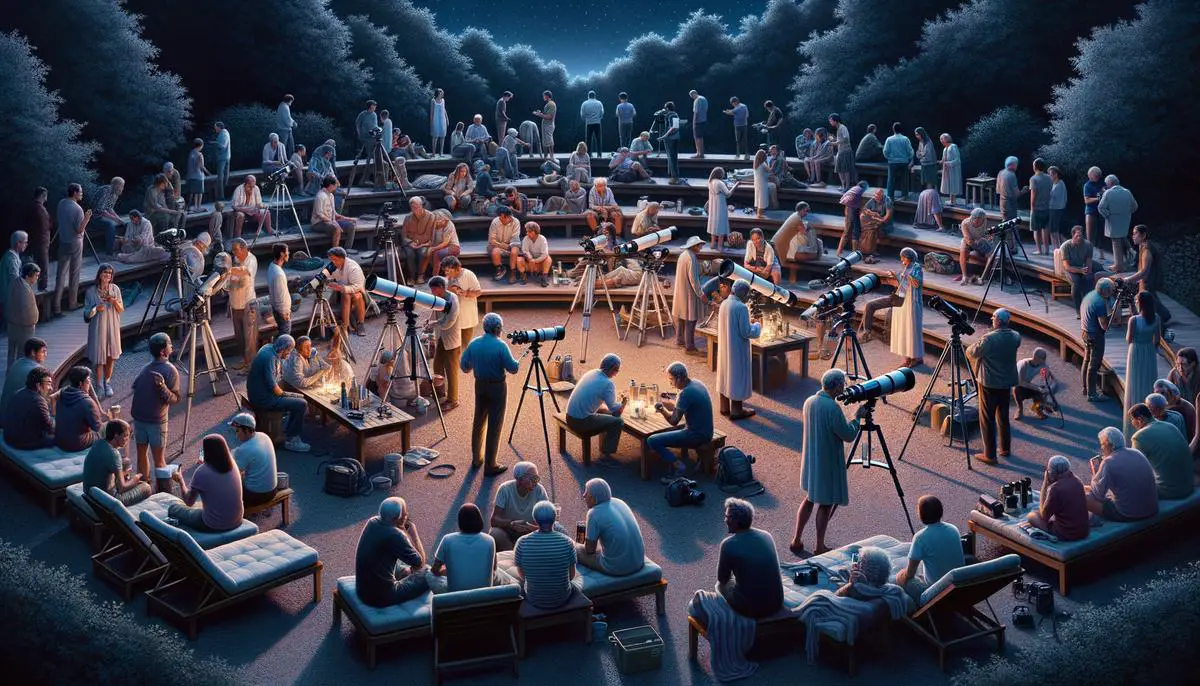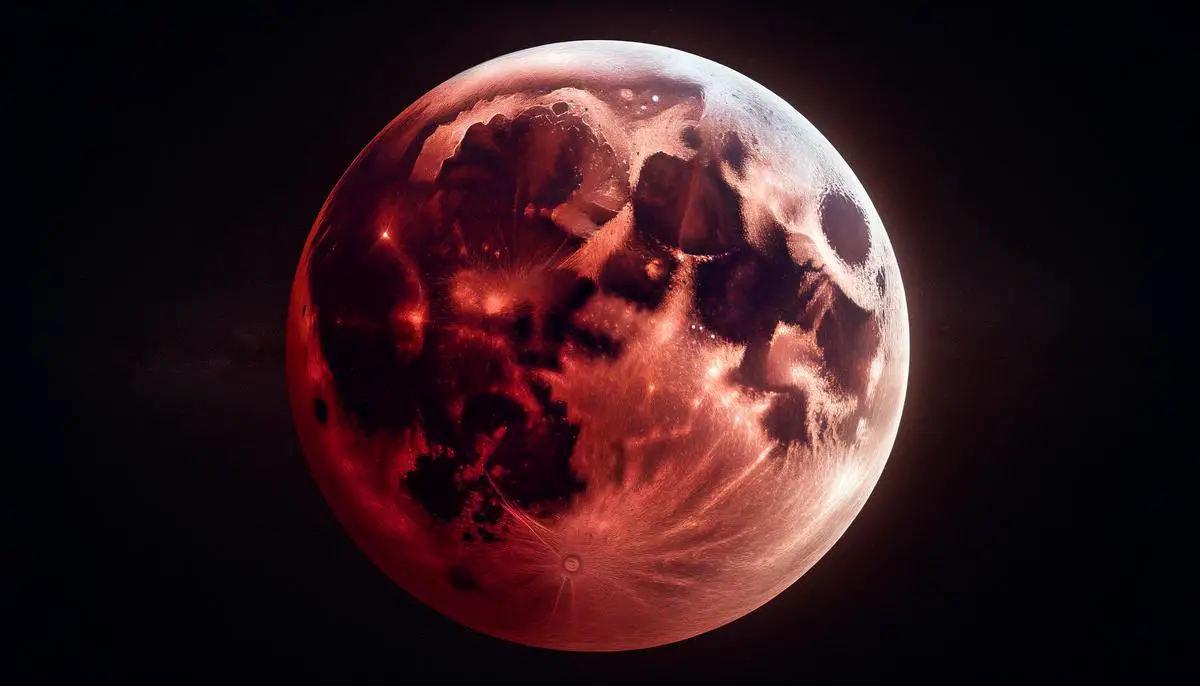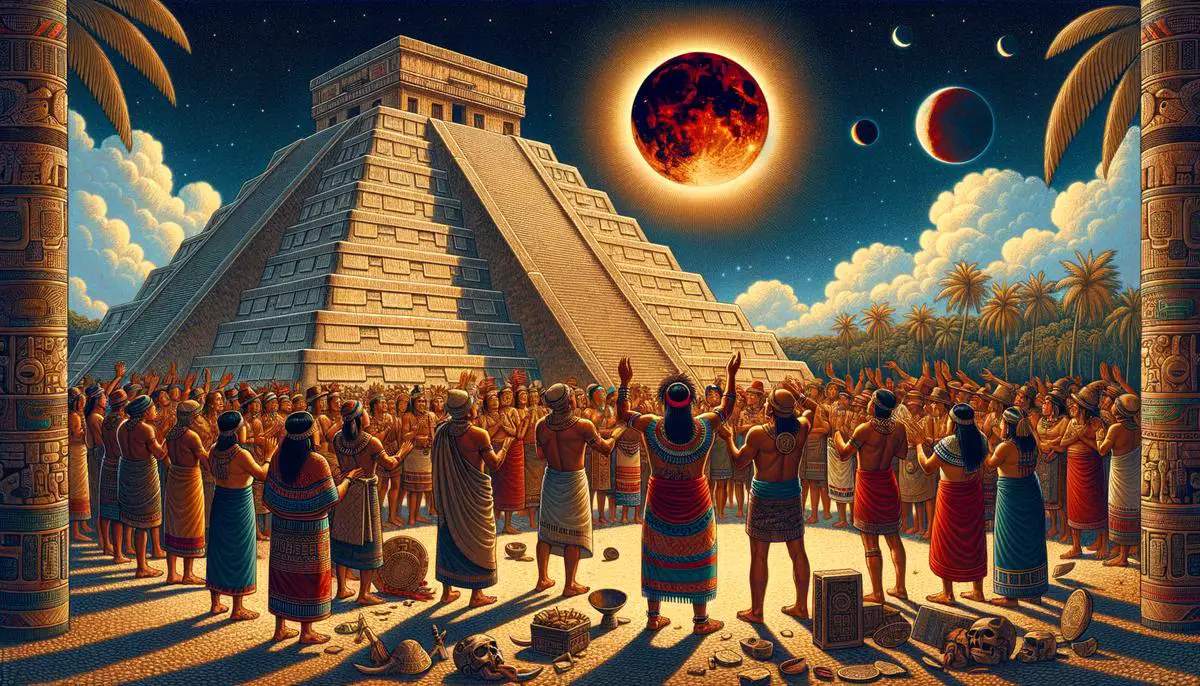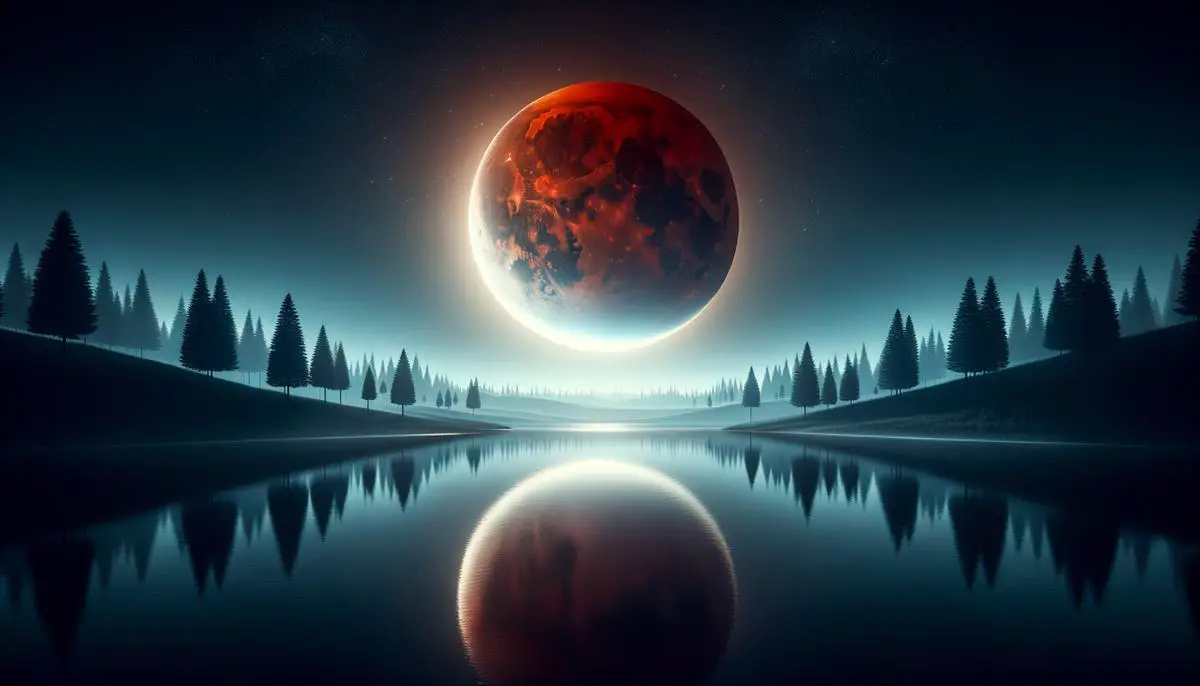Understanding the mechanics and significance of full moon lunar eclipses offers a captivating glimpse into celestial events that have fascinated humanity for centuries. These occurrences provide stunning visual displays and carry rich historical and cultural meanings.
What is a Full Moon Lunar Eclipse?
A full moon lunar eclipse occurs when the Earth aligns precisely between the sun and the moon, casting a shadow across the moon's face. This celestial alignment can only happen during a full moon, when the moon is directly opposite the sun.
For a total lunar eclipse, the moon passes completely into Earth's umbra, the darker, central part of its shadow. The Earth's shadow engulfs the entire lunar surface, turning it a reddish hue, often referred to as a "Blood Moon". This reddish color results from sunlight scattering through Earth's atmosphere during sunrises and sunsets around the globe, and then this light bends around Earth and reflects off the moon.
A partial lunar eclipse happens when only a portion of the moon enters Earth's umbra, creating a noticeable darkened area on the moon. The degree of this darkening depends on the alignment of the sun, Earth, and moon.
A penumbral eclipse is more subtle. Here, the moon passes through Earth's penumbra, the lighter outer section of its shadow. This type of eclipse can be challenging to spot, as it merely results in a slight dimming of the moon's surface.
Phases of a Full Moon Lunar Eclipse:
- Moon enters Earth's penumbra (almost imperceptible shading)
- Moon begins to enter umbra (partial eclipse starts)
- Moon fully immersed in umbra (totality, characteristic red color)
- Moon exits umbra
- Moon exits penumbra (returns to regular brilliance)
Upcoming Full Moon Lunar Eclipses and Viewing Tips
The next total lunar eclipse will occur on March 13/14, 2025. This event will be visible from North America, South America, and parts of the Pacific. The total phase of this eclipse begins at 11:57 p.m. EST on March 13 (0357 GMT on March 14) and concludes at 6:00 a.m. EST (1000 GMT) on March 14.1
A partial lunar eclipse is scheduled for September 18, 2024, observable across Europe, much of Asia, Africa, the Americas, and various oceanic regions. This will begin at 8:41 p.m. EDT (0141 GMT on Sept. 18), with its maximum point around 10:44 p.m. EDT (0341 GMT) and concluding at 12:47 a.m. EDT (0547 GMT).2
For optimal viewing:
- Find a clear, dark spot away from city lights
- Dress appropriately for the weather, as eclipses can last several hours
- Bring a blanket or chair and warm beverages if necessary
- Telescopes and binoculars can enhance the experience
- Set up telescopes in advance to adjust to outdoor temperature
- For photography, invest in quality astrophotography equipment
- Allow equipment time to acclimate to prevent condensation
- Consider following live streams if local weather is unfavorable
Understanding the phases of a lunar eclipse can enrich your viewing experience, whether through the naked eye or sophisticated telescopes.

Why the Moon Turns Red
The "Blood Moon" phenomenon during total lunar eclipses is a result of Rayleigh scattering. As Earth blocks direct sunlight from illuminating the moon's surface, some sunlight still reaches the moon by passing through Earth's atmosphere.
During this process, shorter wavelengths of light (blue and violet) scatter in all directions and are filtered out, while longer wavelengths (red and orange) bend around Earth and illuminate the moon. This gives the moon its characteristic reddish tint during a total lunar eclipse.
The intensity and specific shade of red can vary based on atmospheric conditions:
- A clear atmosphere typically yields a brighter, more vivid red hue
- Significant amounts of dust, volcanic ash, or pollution can result in a deeper, darker reddish-brown coloration
Historical records indicate that lunar eclipses occurring shortly after major volcanic eruptions have displayed particularly dark and intense red colors due to increased atmospheric particulates.3
"The Blood Moon phenomenon, while visually striking, has no inherent danger or special astronomical significance beyond being a result of Earth's atmospheric conditions. It serves as a beautiful demonstration of the interplay between our planet and celestial events."

Historical and Cultural Significance
Full moon lunar eclipses have held profound cultural and spiritual significance throughout history. Ancient civilizations often viewed these events as messages or warnings from the gods, inspiring myths and rituals:
- The Inca believed a jaguar ate the moon during eclipses, prompting them to make loud noises to scare it away
- Chinese mythology involved a celestial dragon devouring the moon, leading to communal rituals to chase it off
- Hindu mythology explained eclipses through the legend of Rahu, a demon that periodically catches and consumes the moon
Lunar eclipses also influenced practical aspects of ancient life:
- Greek and Chinese mariners used their understanding of lunar eclipses to refine calendars and improve navigation
- Farmers incorporated eclipse cycles into agricultural calendars for planting and harvesting
Notable historical figures have leveraged eclipse knowledge:
Christopher Columbus used his almanac to predict a lunar eclipse in 1504, convincing hostile islanders to provide his stranded crew with supplies.4
Architectural alignments, such as those in Maya structures, often incorporated lunar eclipse cycles, demonstrating the sophisticated astronomical knowledge of ancient civilizations.
In modern times, while superstitions have largely dissipated, lunar eclipses continue to fascinate communities worldwide as opportunities for collective wonder and learning. These events bridge celestial phenomena with human experience, enriching our understanding of the universe and our place within it.

Full moon lunar eclipses serve as remarkable reminders of our connection to the cosmos. They offer both a visual spectacle and an opportunity to reflect on the intricate interplay between Earth, its atmosphere, and celestial bodies. These events continue to inspire awe and curiosity about our universe.
- Espenak F. Lunar eclipse predictions. NASA Eclipse Web Site.
- Astronomical Society of the Pacific. The next lunar eclipse.
- Robock A. Volcanic eruptions and climate. Rev Geophys. 2000;38(2):191-219.
- Morison S. Admiral of the Ocean Sea: A Life of Christopher Columbus. Little, Brown and Company; 1942.
![]()

Your work has captivated me just as much as it has captivated you. The visual presentation is elegant, and the written content is sophisticated. However, you appear concerned about the possibility of presenting something that could be considered dubious. I’m confident you’ll be able to resolve this issue promptly.